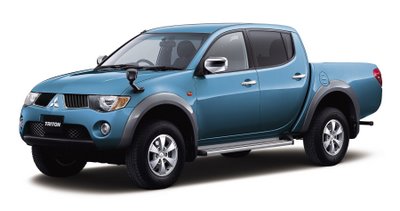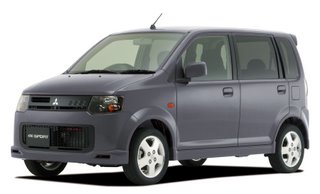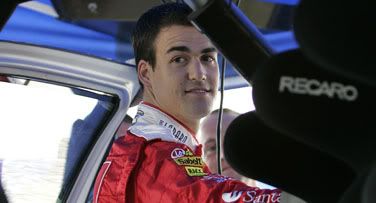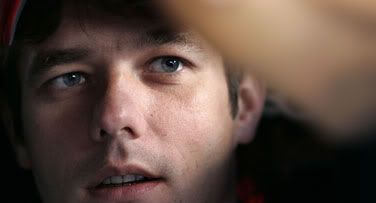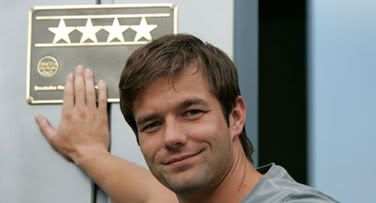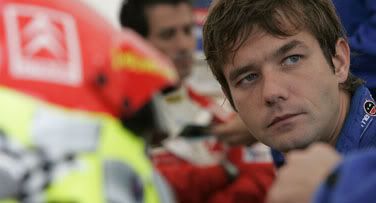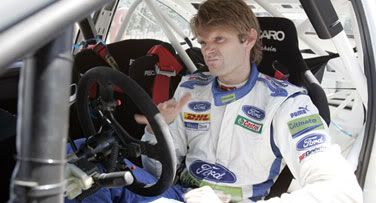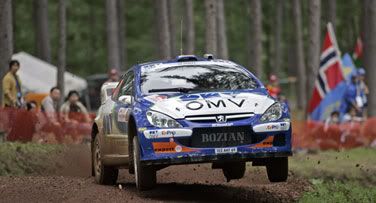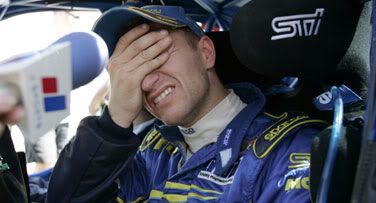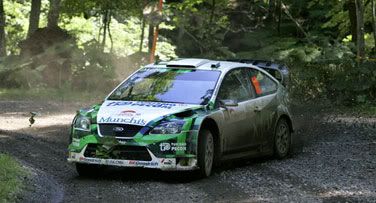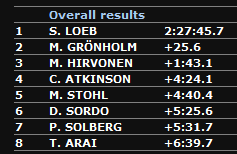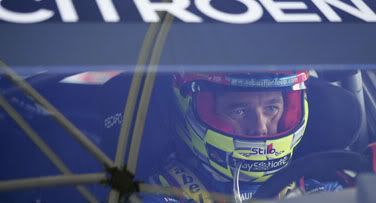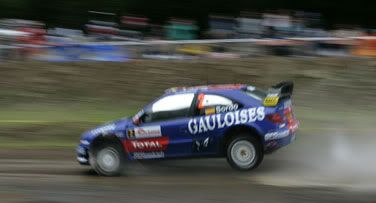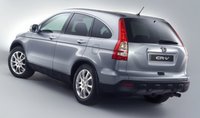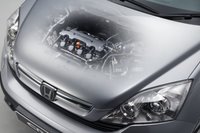— World Premiere for "Global Standard All-round SUV" New Pajero —
Tokyo, September 28, 2006 — Mitsubishi Motors Corporation today gave the new "global standard all-round SUV" Pajero*1 its world debut at Le Mondial de l' Automobile 2006 (Paris Motor Show 2006) being held in Halls 1-8 of the Paris Expo Porte de Versailles from September 28 (September 30 for the general public) through October 15. Also on display are the Outlander Concept, based on the Japanese market Outlander on-road SUV with styling and powertrain tailored to the European market, and debuting alongside the new Pajero is the new Pajero Evolution which the company plans to enter in the 2007 Dakar Rally. The company is showing a total of 13 vehicles (18 when the show opens to the general public).
Features distinguishing the new Pajero (European market specification) include: a similar all-round SUV specification (approach and other ramp angles, ground clearance) as its predecessor; the Super Select 4WD II driveline developed to Mitsubishi Motors' All Wheel Control (AWC) concept to deliver outstanding go-anywhere all-terrain performance; Active Traction & Stability Control (ASTC) system that has been upgraded to allow the installation of and to work with a new rear differential lock; a classy uptown interior design; and a Rockford Acoustic Design Premium Sound System™.
Outlander Concept is tailored to the European market through a number of changes to the Japan market model. It is powered by a Volkswagen 2.0-liter 16-valve DOHC direct-injection intercooler-turbocharger diesel engine that is mated to a 6-speed manual gearbox. In its styling Outlander Concept sports the Mt Fuji-style front grille that serves as one of the design identity elements for Mitsubishi brand models in Europe.
The Pajero Evolution rally machine has won the Dakar Rally four times in a row since its debut in the 2003 event. Now in its fifth year, the latest iteration features improvements to the suspension and driveline and, as on the new Pajero regular production model, features a redesigned front visage with the underside of the headlights swept up to serve as a motif for the eyes of a wildcat (from which the model derives its name).
At its press conference held on September 28 at the Paris Motor Show, the company introduced the four drivers expected to be representing Mitsubishi Motors in the 2007 Dakar Rally: Japanese ace pilot Hiroshi Masuoka, 2006 overall champion and former alpine ski champion Luc Alphand (France), overall champion two years running in 2004 and 2005 Stephane Peterhansel (France) and the young rising star Nani Roma (Spain).
*1: Montero in Spain / Shogun in the UK
1. Product features: New Pajero (European market specification)
* New Pajero is offered in 7-seater long and 5-seater short body types to accommodate diverse customer needs and lifestyles.
* Diesel models are powered by a 3.2-liter common-rail direct injection diesel engine that clears Euro-4 emissions regulations and is 15% quieter than its predecessor. (Maxima: A/T models 125kW(170 PS) / 373 Nm; M/T models 118kW(160 PS) / 381 Nm). Gasoline models are powered by a 3.8-liter V6 SOHC MIVEC engine that produces a maximum power output of 250 PS.
* The engines are mated to a 5-speed manual or to the INVECS-II 5-speed automatic transmission.
* The new Pajero uses the electronically-controlled Super Select 4WD-II driveline well-received on its predecessor for the superior off-road capabilities it delivers. The driver can select from four drive modes to match surface conditions and his driving preferences: the 2H 2WD mode and three 4WD modes (4H, 4HLc and 4LLc).
* The Active Traction & Stability Control (ATSC) system that regulates drive and braking force at each wheel on an individual basis to achieve superior handling stability and off-road performance has been upgraded to accommodate and work with a rear differential lock and extend the Pajero's capabilities over unmade surfaces.
* The new Pajero retains the independent double wishbone front and multi-link rear suspension configuration of its predecessor. The use of different spring constants and overall tuning of the suspension have reduced roll by 25% and more to improve handling and stability at all speeds and to make for a flatter and more comfortable ride.
* Long body models are fitted with a third row of seats that fold away under the floor when not required, a feature which proved popular on the previous Pajero. The head restraints also stow neatly under the floor.
* Built into the tailgate is a generous two-tier storage box: the top section provides free space for stowing a first-aid kit or tissue box while the bottom section holds the emergency triangle.
* The new Pajero sports a new Rockford Acoustic Design Premium Sound System™ comprising a 860 Watt amplifier, 12 speakers, a digital signal processor (DSP) and a 5.1 channel theater surround system that creates a soundstage with soulful heavy bass and a high acoustic energy flow.
* Mitsubishi's on-board navigation system houses a 30GB hard disk drive with a 7-inch LCD display and uses dedicated LSI circuitry to provide ultra-fast search and route finding capabilities.
2. Product features: Outlander Concept
* Outlander Concept sports an eye-catching Red Metallic body finish using silver accent coloring for the grille, roof rails and other elements to give a sporty dash to the overall appearance. The car rides on 20-inch 6-spoke alloy road wheels that give the lower body a tauter look as well as leaving no doubt as to Outlander Concept's on-road SUV personality.
* The powertrain mates the 2.0-liter 16-valve DOHC direct-injection diesel engine that produces maxima of 103 kW and 310 N-m and powers the Europe-market Grandis sedan to a 6-speed manual gearbox. Outlander Concept uses a diesel particulate filter (DPF) to meet Euro-4 emission standards.
* The driveline uses an electronically-controlled 4WD system developed from Mitsubishi Motors' All-Wheel Control (AWC) approach to deliver optimum drive torque for any particular situation or driving conditions and realize economy and go-anywhere performance that do justice to an all-round SUV.
* All-round independent suspension delivers responsive and accurate handling with a pliant ride. The aluminum engine hood, as used on the Lancer Evolution, reduces roll to improve road holding and increase stability.
* In-car entertainment is provided by the same 650 Watt 9-speaker Rockford Fosgate Premium Sound System™ acoustically tuned to the interior of, and well-received on, the Japan market Outlander.
* Outlander Concept uses the same split tailgate as the Japan market model with separate upper and lower sections that facilitate loading or unloading of different sizes and weights of luggage. It also uses the same fold-and-tumble second row seats and occasional-use third row seats, normally stowed under the floor, to produce a cavernous luggage compartment or to provide seating for seven as required.
Gallery (click image to enlarge):
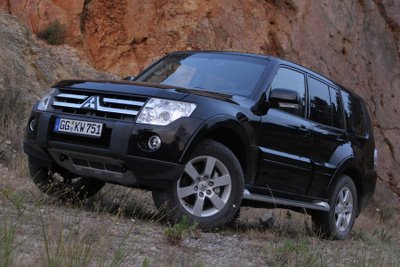
Pajero (European market specification)

Outlander Concept (Show car)
-Mitsubishi Motors Corporation





















